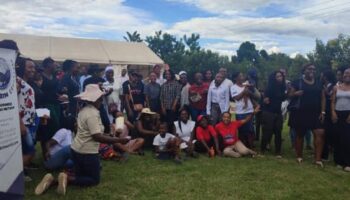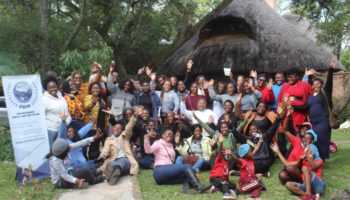
ZBIN Continues to cover Diaspora Strategies and to date we have given you the importance of this important sector. We have covered the benefits that can accrue to a country that implements a successful Diaspora Strategy. Below we look at Diaspora Networks
Some diasporas are vast and global. For example, there are an estimated 70 million in the Irish diaspora, 25 million non-resident Indians and 60 million overseas Chinese, including significant numbers in nearly all countries. They create a web of cross-border connections.39 Some countries have cast the net wide in terms of engaging diaspora members and have developed global diaspora networks. The global networks may be just country-specific or they may be specialized global networks for particular professions in the diaspora. As noted by Ancien, Boyle and Kitchin, ‘Global knowledge networks are transnational networks linking global regions with the homeland, including trade missions, business forums, philanthropy, mentoring, advice and access to decision makers.’
Kutznetsov has set out several important points to consider when establishing global diaspora networks:
1. It is essential that there is a formal framework in place to maintain relationships and make sure that ideas are followed through.
2.However, if you formalise a network too much, you can kill it off. That has also been a common mistake of many developing countries – they try to put together a program that is very formal and it kills all the spirit of entrepreneurship and intrinsic motivation. People will only get involved in a network like this if they want to, not because someone tells them to.
Organizations should avoid launching a network in a blaze of publicity with a big conference before it has been tried and produced some successes. Rather, a conference should be a way of celebrating credibility through showcasing proven successes.
3. Furthermore, he suggests that successful diaspora networks combine the following three main features:
Networks bring together people with strong intrinsic motivation.
Members play both direct roles (implementing projects in the home country) and indirect roles (serving as bridges and antennae for the development of projects in the home country).
Successful initiatives move from discussions on how to get involved with the home country to transactions (tangible outcomes).
Examples of leading global networks include Advance Australia, GlobalScots, ChileGlobal, The Ireland Funds and KEA New Zealand. For further information on these networks please see the section entitled ‘Learn from others: Diaspora organizations share their stories.’ Other examples of global diaspora networks include: NLBorrels which is a global network of Dutch expatriate professionals and entrepreneurs, dedicated to facilitating social interaction, career advancement and exchange of information of interest to the Dutch community living abroad. It currently has 5,500 members in the US and an additional 6,500 members in 81 countries worldwide;43 International Council of Russian Compatriots (ICRC) was founded at the end of 2002 and its main aim is to consolidate the Russian diaspora and to attract the intellectual, economic and financial resources of Russian compatriots who are living abroad;44 Organization of the Swiss Abroad (OSA) represents Swiss expatriates’ interests in Switzerland and is supported by 750 Swiss expatriate associations and Swiss institutions all over the world.
Every year, several hundred Swiss living all over the world meet at the OSA’s Congress of the Swiss Abroad; and Nigerians in the Diaspora Organisation (NIDO) which is a non-profit organization with its current focus is on professional networking, social advocacy, education, healthcare, technological and economic empowerment, as well as skills and cultural exchange projects in Canada and Nigeria. NIDO is recognized by the Nigerian government as the umbrella organization for all Nigerians around the world and as the vanguard of Nigeria in the international community, promoting the country’s image abroad. NIDO also assists in promoting Nigeria as an investment destination in Africa.
Regional diaspora networks Given the amount of resources and time needed to establish a successful global diaspora network, some organizations have decided to focus on connecting with diaspora members in particular regions.
The benefit of regional diaspora networks is that they allow for a more personalized and focused engagement with diaspora members within a smaller geographical framework. Regional diaspora networks can also act as a catalyst to creating global diaspora networks by building on the success of the regional network. The ‘Ireland Reaching Out Project’ (www.irelandxo.org) is an example of how local areas can develop their own targeted diaspora initiatives and is based on a simple idea – instead of waiting for people of Irish descent to come to Ireland to trace their roots, local Irish regions go the other way. At town land, village and parish level, local Irish communities identify who left their neighborhoods and trace them and their descendants worldwide and engage with them and invite them to become part of an extended ‘virtual community’ with their place of ancestral origin. Part of this program is an annual ‘Week of Welcomes’ which is held in each parish or community in which these newly identified people are invited to return.
Over time the objective of this program, which was founded by returned Irish emigrant, Mike Feerick in 2011, is to systematically identify and unify members of the diaspora, based on their ancestral origins and engage them in terms of them being advisors, investors and promoters of Irish products. Other examples of regional diaspora networks include: BayBrazil which fosters communication and entrepreneurship among professionals in the San Francisco Bay area who work with or wish to develop connections with Brazil; The Lansdowne Club in Sydney, Australia which has over 2,000 members made up of business professionals who are Irish and living in Australia and Australians who have business interests in Ireland. It is now a vibrant and active business network which has spread to other cities in Australia and New Zealand and runs a series of events annually with their St. Patrick’s Day lunch now the largest of its kind in the world and is attended by the Prime Minister of Australia and other leading political and business leaders; Uhollanzi Kenya Association which is the only registered Kenyan diaspora association in the Netherlands. Its goals are to support and promote the welfare of Kenyans in the Netherlands in collaboration with local authorities and partners as well as to enhance Kenyan migrants’ capacity to meaningfully give back to their country of origin; and United Haitians in the United Kingdom network is made up of a group of Haitians, Haitian descendants, and friends of Haiti, living in the United Kingdom. Its main goal is to make a positive contribution in the development of Haiti and to keep the Haitian culture alive in the United Kingdom. They financially support worthwhile non-governmental and sustainable educational projects throughout Haiti with an emphasis on children’s school fees, uniforms and supplies.
City diaspora networks
A number of organizations around the world are now focusing on connecting with their diaspora members and, moreover, affinity diaspora members by launching city diaspora networks. Indeed, the affinity diaspora is an important segment of the diaspora to engage in building such networks, as so many people move to cities to work or study for certain periods or take repeated city breaks. Take the United States, for example, while many people have an affinity to the country as a result of spending time there, typically, it is with a particular city that people identity as their place of affinity. New Orleans is a great example of this and the power of the affinity diaspora network in connecting with the city. These ‘affinity diaspora’ are people, for whom, as the song goes ‘know what it means to miss New Orleans’ and return to the city for one season, reason or another and ‘let the good times roll.’ The other New Orleans diaspora refers to the population evacuated or forced to flee from New Orleans, Louisiana, by the effects of Hurricane Katrina in the late summer of 2005. Drawing from these two different diasporas (a displaced one within its own country and a large affinity diaspora)
New Orleans is an interesting case study on attracting and engaging diaspora populations. Famous playwright, Tennessee Williams himself could be considered an affinity diaspora member of New Orleans, (Mississippi born, Missouri raised and later lifetime traveler) he considered New Orleans his ‘spiritual home’ and was a resident of the city many times throughout his life. It is here that he is honored by an annual literary festival which brings Williams and literary fans from around the country and world to celebrate. These same ‘friends’ of the city and festival were much of the affinity diaspora who have contributed to a continued festival and its subsequent successes (particularly after 2005). The cultural branding of New Orleans has been responsible in no small part for the success of its rebuilding. Programs geared at drawing the affinity diaspora into the city (whether in support for events or to invest) have been invaluable during the five years of rebuilding and reshaping the city. The New Orleans Football team (The Saints) also provide a diaspora meeting point and especially at games in Atlanta and Houston (where many New Orleaneans resettled) have become a time of both cheering the team but also the city itself. Specific festivals such as Essence, Decadence, VooDoo, French Quarter and the New Orleans Jazz and Heritage Festivals (to name a few) all annually re-engage the affinity diasporas’ interest and economy. Furthermore, people are often extremely proud of the particular area that they are from within a country, and city diaspora networks allow them to connect directly with that area. An example of such a network is the ‘Friends of Belfast City’ network. This is an initiative, started in 1998, which promotes partnerships between Belfast and North America, primarily in the areas of business and investment. With almost 600 members from the areas of business, law, academia and government, including individuals from organizations such as Liberty Mutual Insurance, Lehman Brothers, McKinsey & Company, Harvard University and Columbia University, the Friends of Belfast network offers a range of contacts for Belfast organizations working in the US and Canada.
Women and diaspora networks
Female migrants represent a significant portion of total migration, making up 49 per cent of the total in 2010.47 As a result, women’s diaspora networks are increasingly being created as a way of uniting women from the homeland with other women from the diaspora. ‘All over the world there is an important and wide-spread presence of migrant women’s networks … These networks are very active in supporting women, in promoting their needs, their rights, and in simply bringing women together. These are more formal and institutionalised types of networks.’
An example of a women’s diaspora network is the Turkish Women’s International Network which is a global networking platform for women with family, cultural or professional ties to Turkey. The vision of the network is to build a global community of professional Turkish women to cross-pollinate ideas, inspiration and connections; start a mentorship program to mentor younger Turkish women in university programs across the globe; and launch the Turkish WIN ‘Angels and Advisors’ program to connect entrepreneurs to a capital and advice network. The founder of TurkishWIN,
Melek Pulatkonak, states that the motivation for establishing the network was because, ‘As a professional Turkish woman living abroad, I feel the need to connect to a platform where I can network, celebrate the successes of trailblazers, learn from experts in their fields and tap into the power of a large trust network within my community. I know many strong, successful and amazing Turkish women. I am confident there are hundreds or thousands whom I do not know. As an entrepreneur, I decided to do something about it and launched TurkishWIN.’ Examples of women’s diaspora networks include Swedish Women’s Educational Association, Indus Women Leaders, Diaspora African Women’s Network (DAWN) and the Filipina Women’s Network (FWN).
Next generation diaspora networks Countries and diaspora organizations are increasingly realising how important it is to attract the next generation of disapora leadership. Furthermore, younger members of the diaspora are leveraging networks with their diasporic peers as a way of building professional contacts. As a result,next generation diaspora networks are gaining increasing prominence. Examples of next generation diaspora networks include NEPOMAK (World Organization for Young Overseas Cypriots), The Ireland Funds Global Young Leaders Program and the Young Barbadian Professionals Society (YBPS). Members of the Young Barbadian Professionals Society were either born in Barbados or have Barbadian ancestry. YBPS is comprised of a group of individuals with diverse professional and social interests. Its identity is not only based on the professions and education of its members but is deeply rooted in their respect and love for the Barbadian and Caribbean heritage. The YBPS mission is to garner the intellectual capital of its members to further advance positive transformations in the global Barbadian and Caribbean communities, through the society’s economic development, education, and philanthropic programs.
Alumni diaspora networks
The business of international education, or export education as it is referred to in technical economic parlance, represents a major opportunity for countries to develop a network of affinity scholarly/alumni networks. Demand for education beyond boundaries has increased by 40 per cent over the past decade and is forecast to reach 6 million by 2020.49 In 1995, 90,000 US students went to college overseas; in 2007, 250,000 US students went to college overseas.50 In 2008, there were 300,000 international students in UK universities, paying more than £3.6 billion in fees. Britain attracts more students from abroad than any country outside the US.51 The US State Alumni is an example of a diaspora network seeking to engage international students who pursued studies in the US. Furthermore, scholarly networks are being established by diaspora members from the same home country who are studying abroad. These are important networks for countries to consider developing, as increasing numbers of graduates are emigrating. Through these networks graduates can still engage with the university and indeed the home country. Take for example, the alumni of the Indian Institute of Technology which is a group of 15 autonomous engineering and technology oriented institutes of higher education, established and declared as Institutes of National Importance by the Parliament of India. According to a recent study, the alumni of the seven Indian Institutes of Technology (IITs), now in senior positions in industry and government across the world, have a total budgetary responsibility of $885 billion.
Credit: Diaspora Toolkit
As you stated above, there are more networks on Diaspora Associations, we hope to cover more. We will also review the existing Zimbo networks, key strengths and weaknesses and the way forward.
![]()





